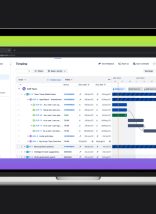Most institutional web development projects are unsuccessful. This is an unfortunate reality that many people are loath to talk about. Surveys show that many teams choose to abandon their web project outright. Even those completed often go over budget or aren’t launched on time. Many executives report displeasure with the websites and apps they end up with. Sad.
We’ve been in this industry for 20 years. Plenty of experience has taught us that there are a handful of predictable reasons at play here. These all gather together to throw a web programming project off the rails. Here are 7 all-too-common mistakes you can avoid with careful planning.
#1 Not Getting All Stakeholders on Board
When you’re setting out to sail across the open sea, you want to know that everyone on board the ship is on the same page. Do all crew members understand their responsibilities? Is everyone following the same map? If you asked each person why they got on the ship in the first place, would they have the same answer? If it’s all systems go, then you’re in good shape. The team is ready to conquer any storms that may come their way, and celebrate with rum at your destination.
You can see how this is a metaphor for web development projects, yes? Imagine if only some of your crew mates supported the ship’s journey. That could leave you at a stand still in the middle of the ocean. In the same regard, if only a few managers or departments are on board with your web development plan? Well, you’re asking for trouble. You’ll have difficulty gathering all the pieces you need to get from Point A to Point B, with success. Consider the content, input, and budget resources your site requires to make it to the finish line. Those who don’t see the value in the project will be unlikely to offer up those necessities. A ship without sails goes nowhere.
#2 Pursuing Goals That Aren’t Clearly Defined
As you embark on your seafaring web adventure, you need to know what the planned outcome of your journey will be. Are you aiming to reach an out of grasp location? Or do you have your eye on some serious treasure?
Web programming can help you transform an entire organization. It can give you tremendous advantages in the market by expanding your audience and reach. It can also shave huge amounts of money from your expenses, keeping your gold chest full. For any of these things to happen, though, you have to have a clear idea of how you will achieve them. What outcome, specifically, will prove that the end result is the success you aimed for? Without knowing what those end measurements will look like, you could end up lost. Unable to stay the course, you’ll drift on the waves, shifting from one task or priority to another.
#3 Letting the Project Creep in Scope
Project creep is something we warn all our web development clients about. It’s the band of pirates, looting everything you have. Or the whirlpool of doom, dragging your entire ship down into the depths of darkness. It’s Moby Dick, eating you. These shenanigans can, and should be, avoided.
There are so many things you could do with your website. The possibilities seem endless and exciting. As a result, it’s tempting to keep adding new features and ideas to the mix. You may find yourself drifting from your original vision. The whole, entire ocean is at your disposable! How could you not want to explore?
Slow down there, Odysseus. The occasional edit or course correction can be helpful, sure. But once your project becomes unrecognizable, it’s going to cost a lot of time and money to get it back on track. And a Cyclops is going to devour at least one of your guys, and that’s on you.
#4 Rushing the Web Development Process
Once you have a good thing going, excitement will naturally set in. This will be particularly noticeable among business owners and organizational executives. The possibilities associated with a big web development effort will be astounding. So, they will become eager. They’ll want to see their vision come to life as soon as possible. Full steam ahead.
Remember what happened to the Titanic when executives decided to show off? You can’t go ahead and fire up the boilers all willy nilly. A great deal of planning, design, and testing has to take place, even if it seems like everything is fine. Rushing the work or failing to provide detailed feedback could lead to big problems. Duplicated work, for example, could waste everyone’s’ time. Or an unforeseen iceberg could sink it all.
#5 Ignoring Customer or User Concerns
Relevant new concepts and web designs will pop up as your project moves forward. You need to be testing and re-evaluating these additions consistently. As you do so, it can be tempting to ignore feedback from customers or users. Your passengers are not making any decisions on this journey. They’re just along for the ride. Why should their opinions matter?
Come on, you scalawag! Your users are the ones you’re designing for, yes? They’re the whole reason you began this trip in the first place. They wanted to get somewhere and chose you to help them. The feedback they provide can be invaluable. You should address any concerns they may have. Listen for comments that come up more than once. If someone says there is a hole in the ship, they shouldn’t have to be a boat expert to report that observation. Always listen to concerns that could affect the successful outcome of your project. The source of the concern is irrelevant.
#6 Settling For Low-Quality Web Design Work
Web development is more about power and programming than aesthetics. A pretty ship is pointless if it can’t float. But, that doesn’t mean visuals and interfaces don’t matter. A strong foundation deserves a sleek appearance. Without it, users won’t feel compelled to look into what you’ve created.
If your finished website or apps don’t look sleek and streamlined, well, yikes. You’re going to have a hard time getting others to engage, or climb on board, so to speak. However, don’t allow blind devotion to icon and colors ignore the necessities of a strong web design. Remember, again, the Titanic? They thought too many lifeboats made the deck look ugly. That was a terrible, terrible decision. Find the balance between giving thought and care to the aesthetic of your site and making sure that NO ONE DIES.
#7 Trying to Follow Unrealistic Schedules or Budgets
Good web development takes time, money, and effort. Anyone who tells you otherwise is suffering from scurvy. Don’t undermine your project by not providing the funds it needs to succeed. A website that will serve you and your consumers long term, is a worthy investment.
Another stumbling block leaving your project in an uncomfortable position, is unrealistic demands. If your crew is hard at work but you lack patience, the problems will be two-fold. First, the job will not be well done, as it’s not complete. Jumping the gun leads to lackluster, rushed, work. This will also diminish team morale. Then, it’s only a matter of time before you have a mutiny on your hands and a weak ship to try to escape on. Low funding and irrational expectations? That’s shortsighted and will almost always cost you more in the long run.
Start Your Web Development Project Off on the Right Foot
If you want to stretch your sea legs and get your web project started on the right foot, here’s some advice. Work with a creative team who knows what it takes to get the job done. They’ll gather the right information, craft the ideal map, and keep everyone sailing forward.
Contact Atlantic BT today to schedule a consultation with our experts. We know a thing or two about the ocean.





